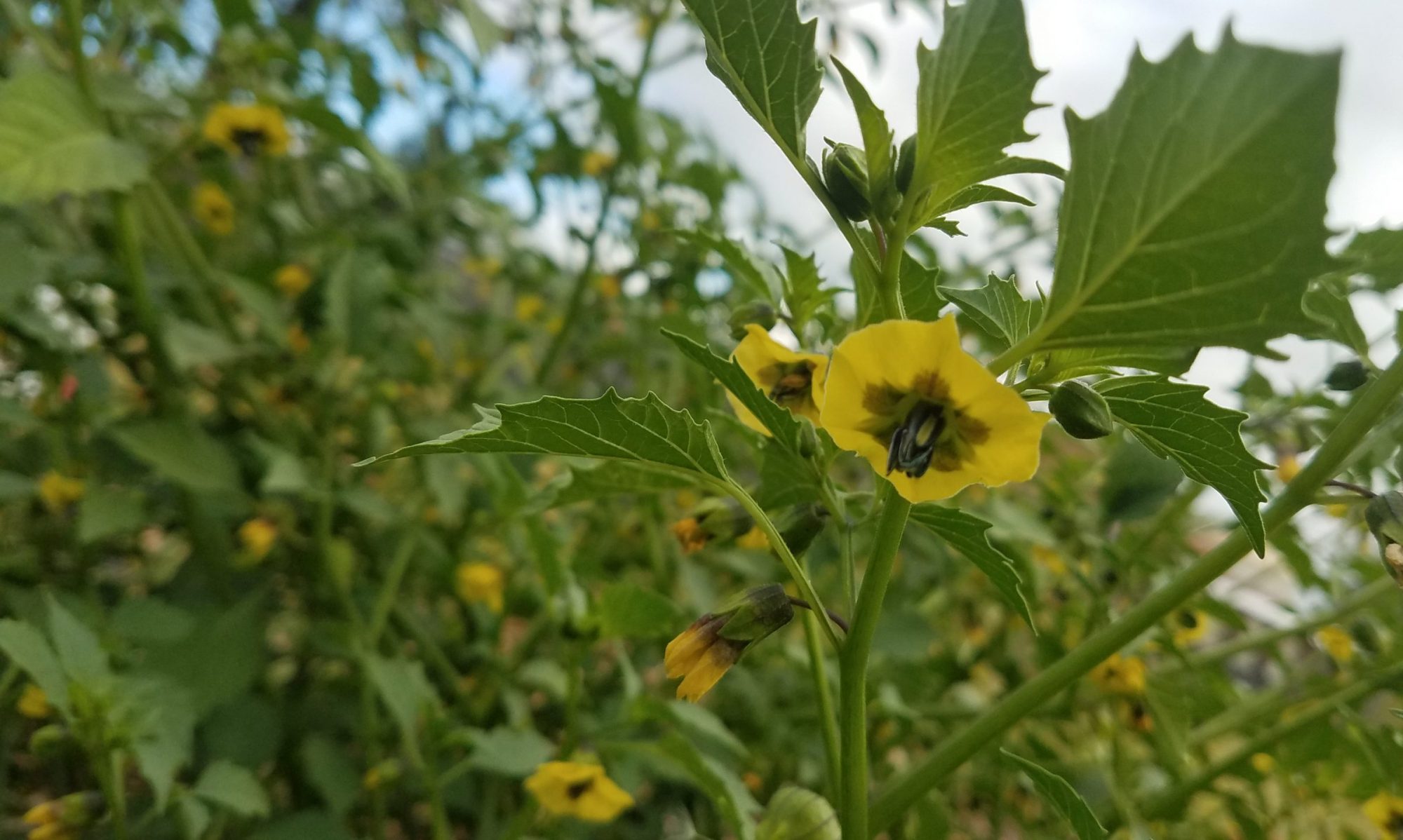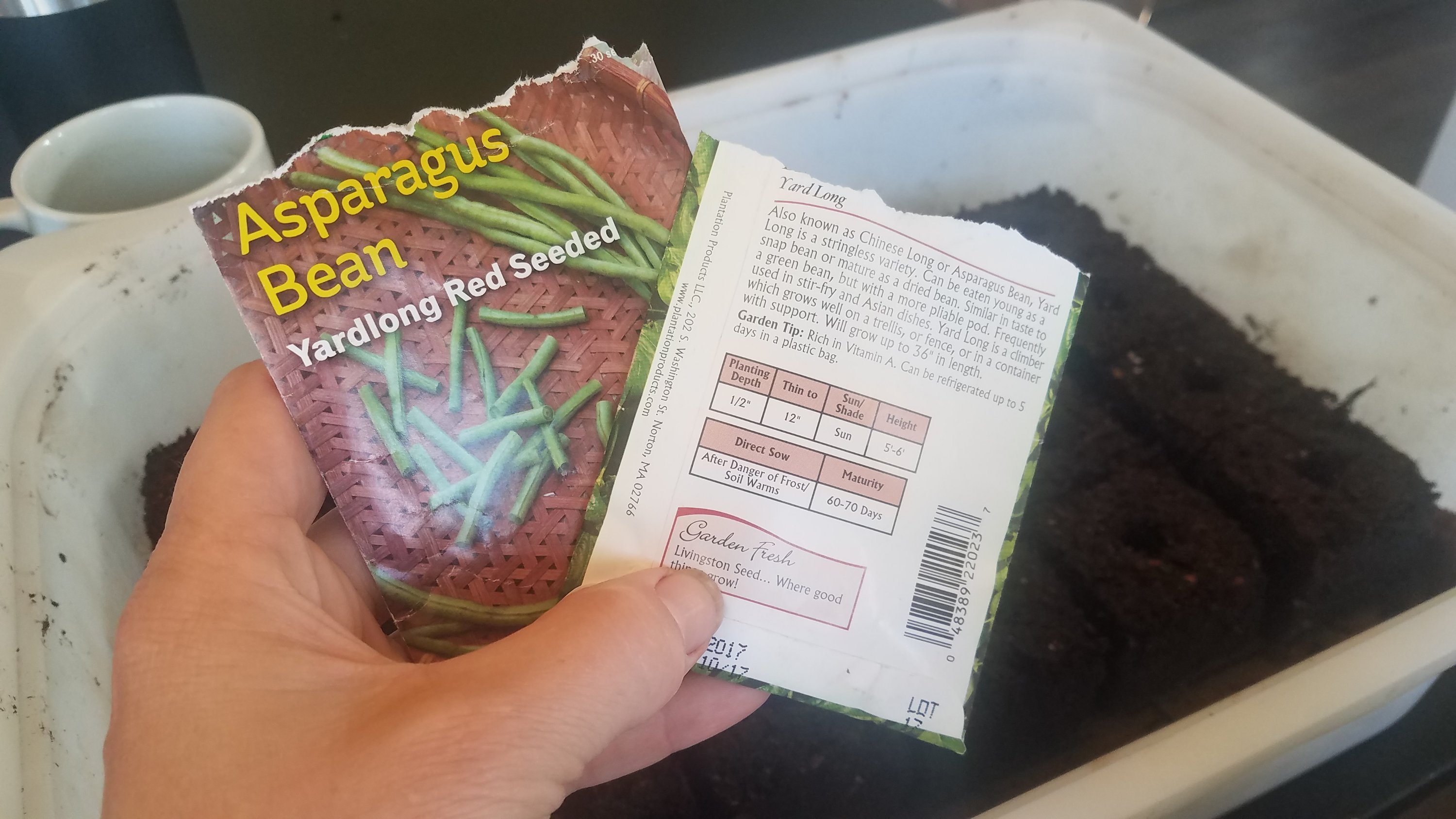Finally got the first picking of green beans this weekend. Peas are still producing, which is nice.
The corn that I replanted, they all sprouted. Who knows… So I thinned them today. The beans that I replanted didn’t do anything, so I planted newly-purchased beans today.
Perfect day for working outside today: cloudy and 70°. We tackled a bunch of weeds around the house and added wood chips.
Earlier this week, I planted the first 4 corn seeds, and Heather planted cranberry beans. Today I planned about 8 feet of bush beans. We also picked up some compost from the city, and I spread some around the plants.
I harvested about 2 cups of strawberries. I think that’s the most I’ve ever harvested from our own plants in my entire life.
Not all of the peas sprouted, but the ones that did look super healthy now and are about a foot tall.
We have a gopher that just can’t resist bok choy. It took out the last of the bok choy from below yesterday and today. Luckily, the plants were left, and they crisped up in the fridge. We’re having Chinese food again tonight. I seeded some more bok choy in the place of the “harvested” ones.
Some Chinese brocolli sprouted. I reseeded the rest.
I reseeded some green beans once again. Tough going on green beans this year.
I transplanted an evil olive tomato.
Only a few of the green beans in row 1 sprouted, so I replanted today. I came across some of the beans from the previous planting, and I can’t tell if they dried out or their sprouts were eaten. I saw ants in the area a few days ago. The beans on the other rows are doing better.
thevtomato plants are looking healthy, and the pepper plants are starting to look better.
We had some great thunderstorms today that refreshed everything.
I reseeded corn where come seeds didn’t grow, and I added a few feet more seeds. I also seeded about five feet of Chinese broccoli.
I’m really happy about the bok choy. On plant got sucked down by a gopher, and one is struggling, but the other four are really vigorous.
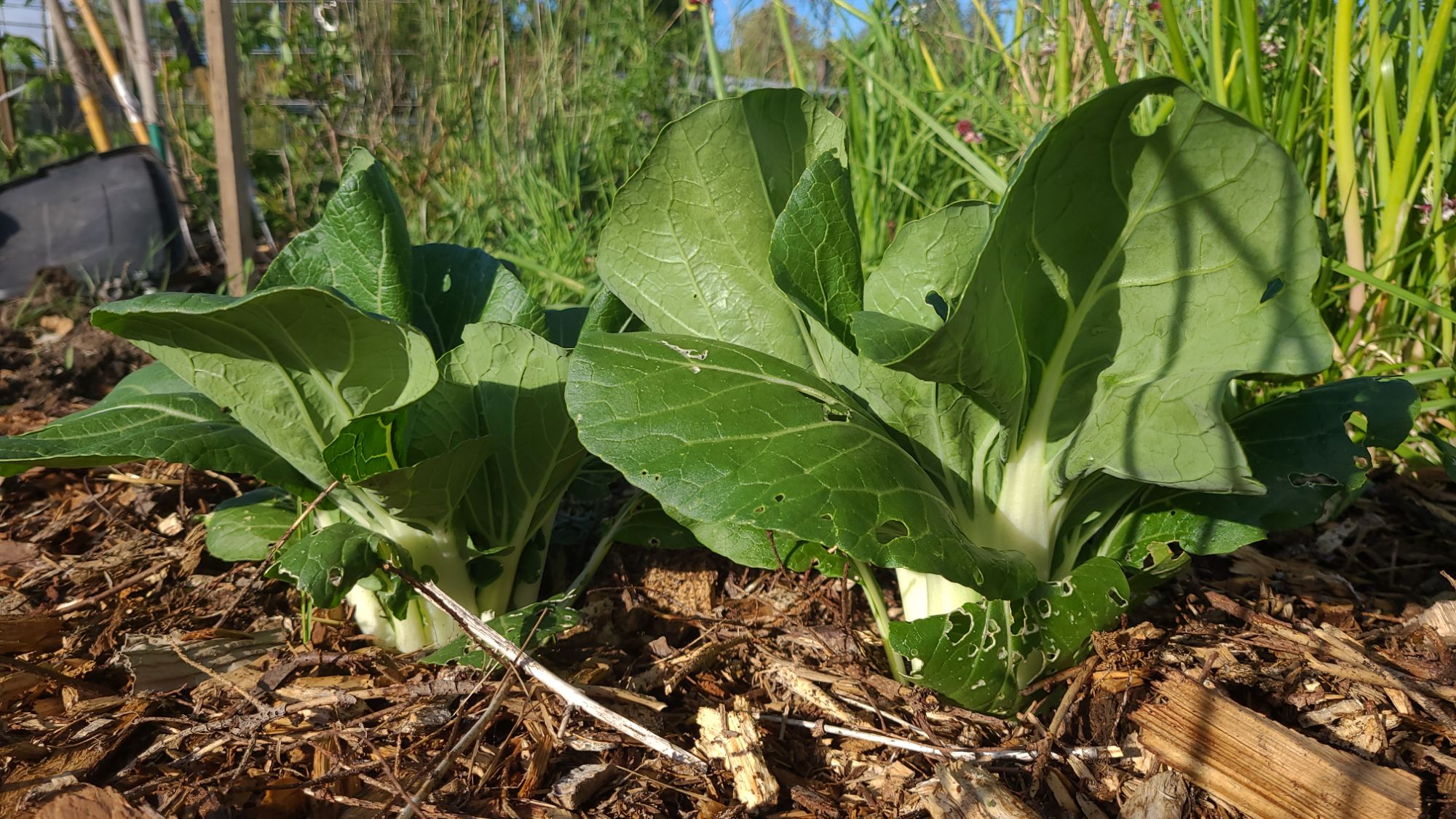
The beans aren’t up yet, but I guess it takes them over a week to germinate. So we wait.
We planted cowpeas in row 3. From east to west: pinkeye purple hull, red ripper, Ozark razorback. We planted cranberry green beans in the west end of rows 3 and 4 (beneath the trellises).
Heather pulled out the remaining kale plants from last year and hung them to dry so we can collect the seeds.
The neighbor’s hay was cut yesterday.
The plum tree is absolutely loaded this year!
I planted about eight feet of Blue Lake bush beans on the west end of row 1. It’s been a grass-infested corner of the garden, so hopefully the bean plants and wood chips will keep the grass out.
Heather harvested garlic from the garden and in front of the house. The bulbs from in front of the house are small, but better than nothing.
And we still have mushrooms coming out our ears.
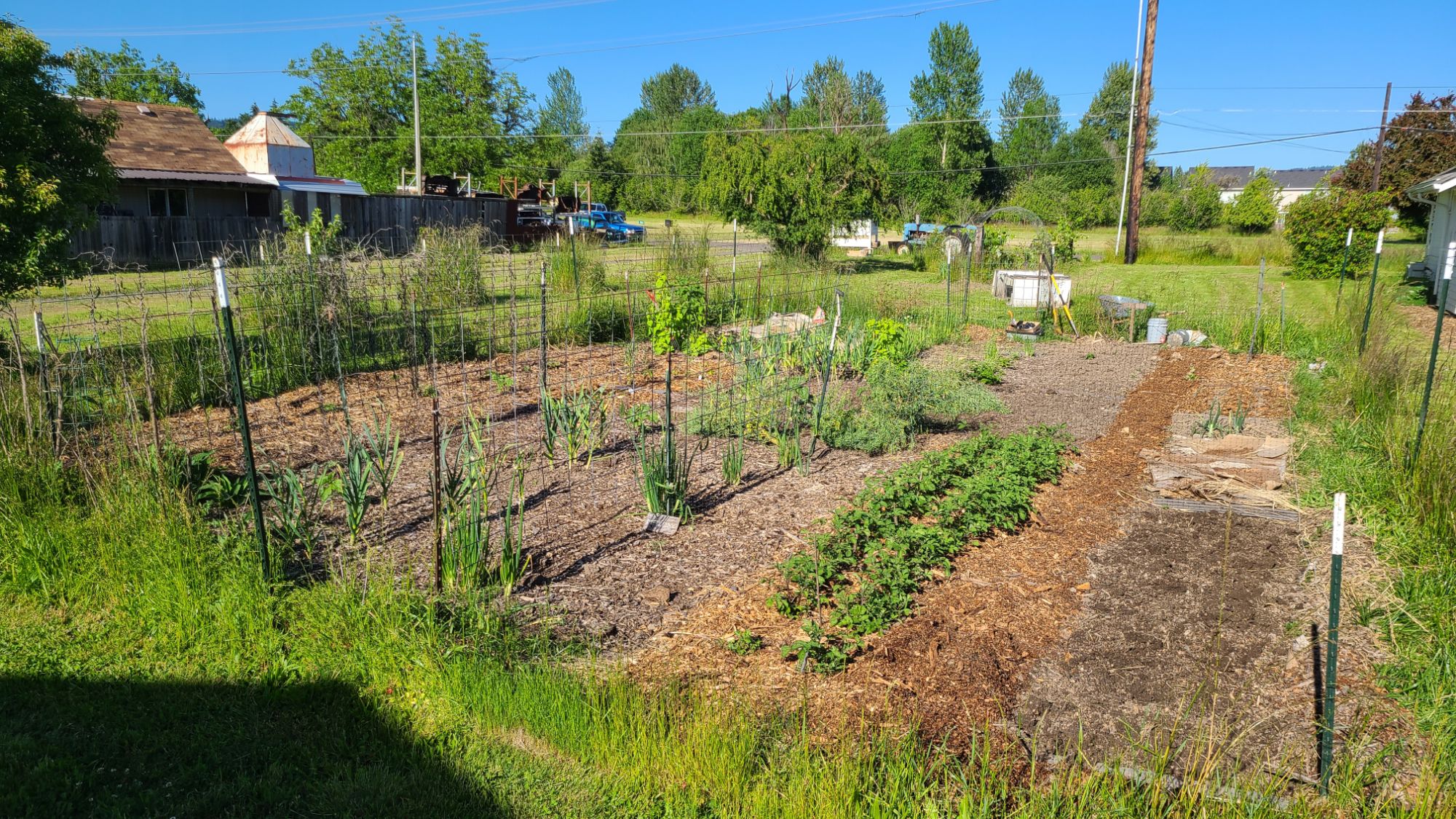
We started harvesting our second pea planting of the season yesterday.
Heather pulled out the bush beans yesterday. We’ll get some dry beans plus some beans for planting next year. I turns out the beans kept on producing, and I think if we had kept harvesting, they would have kept coming.
The artichokes are sending up second sprouts now. I need to read up and learn what that’s all about.
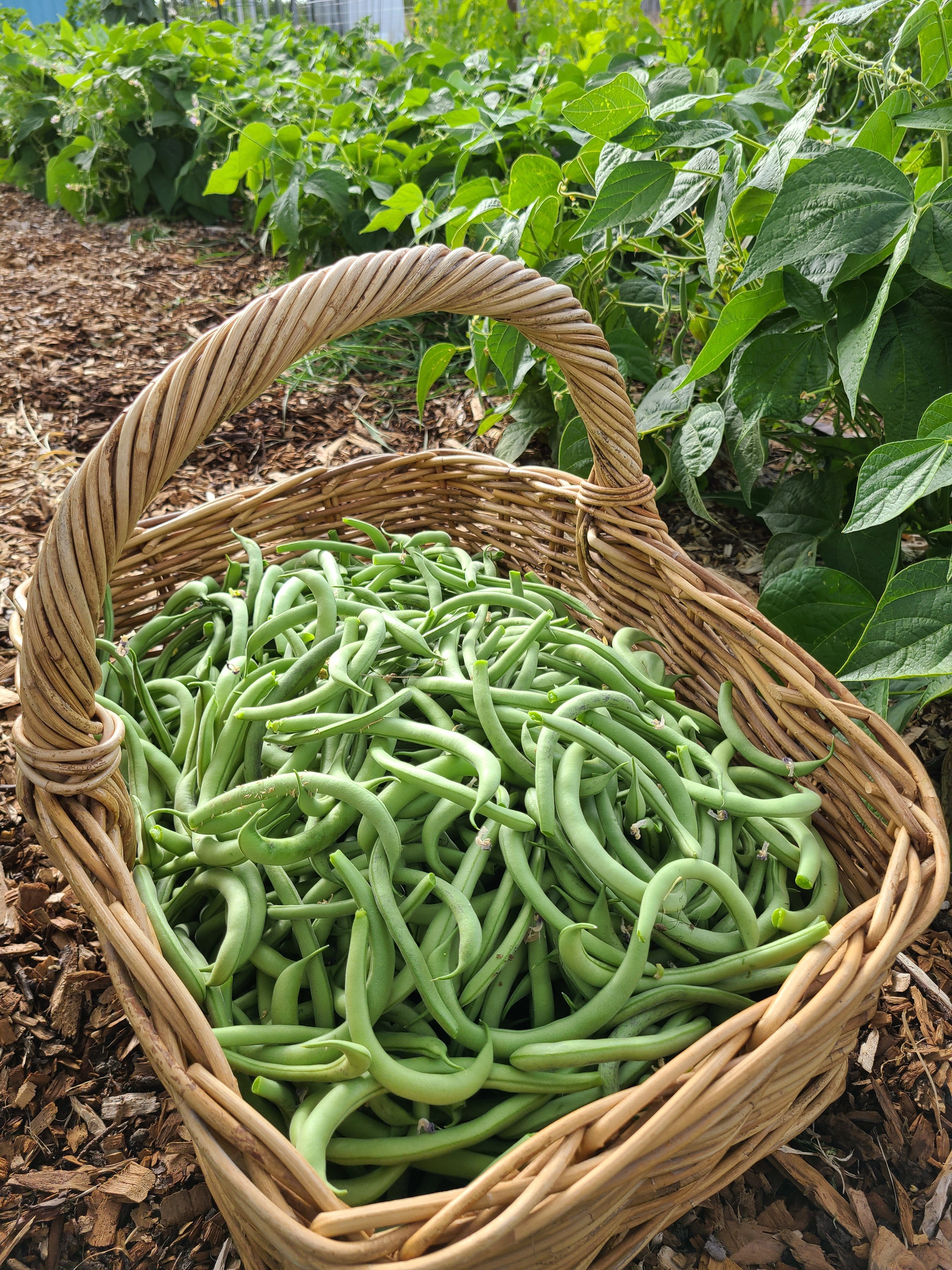
This is our second basket of beans, picked a few days after the first. It takes over an hour to harvest this amount.
Our trail cam recorded one deer the night after we put up the netting, and none since. Even the roses by the front porch are blooming again. Not sure why they disappeared so completely
With the deer gone, the peas have given another nice flush of pods to harvest.
We got a nice shot on the trail cam of a deer walking through the monofilament like nothin’. So we installed polypropylene deer fencing around the garden. It seems to be working, but we’re keeping the trail cam out there in case the deer try anything.
I planted the last batch of corn today. The previous plantings are all up.
We’ve been picking a few beans here and there, but I think we’re just days away from a good crop starting.
We installed three lines of 50lb monofilament around the garden a few days ago. The same day, the field across the street got mowed. The guy who mowed said he saw several deer bed areas. Since that day, the garden is doing better, but we don’t know if it’s because of the monofilament fence or the mowed field.
The volunteer orach plants (from the ones that went to seed last year) have been doing really well. We got our first handful of bush beans today, and there are tons of blossoms. I think the peas are done (healthy vines but noore blossoms). The third planting of corn is sprouting.
The neighbor’s hay got cut on May 17, way earlier than usual. I wonder if there will be a second cutting this year.
The garden is mostly planted now. Transplanted: hops, kale, peppers, and tomatoes. Seeded: beans.
Grant’s garden is also started: Old Mother Stallard beans and a couple dozen watermelon seeds.
We transplanted a rhubarb plant on the north side of the house.
The cilantro that overwintered is blooming, so we should be able to harvest coriander seed soon. Heather checked a couple of garlic plants, and they have about four plump cloves per head. Hopefully by harvest time on June, they’ll have more cloves, but they’re looking great.
Karen the sheep was late to lose her winter coat this year. She still has a small patch on her back.
Here’s our entire plum harvest for this year:

But the blackberries– wow! It’s a bumper year!
The pole beans are late but looking really lush:
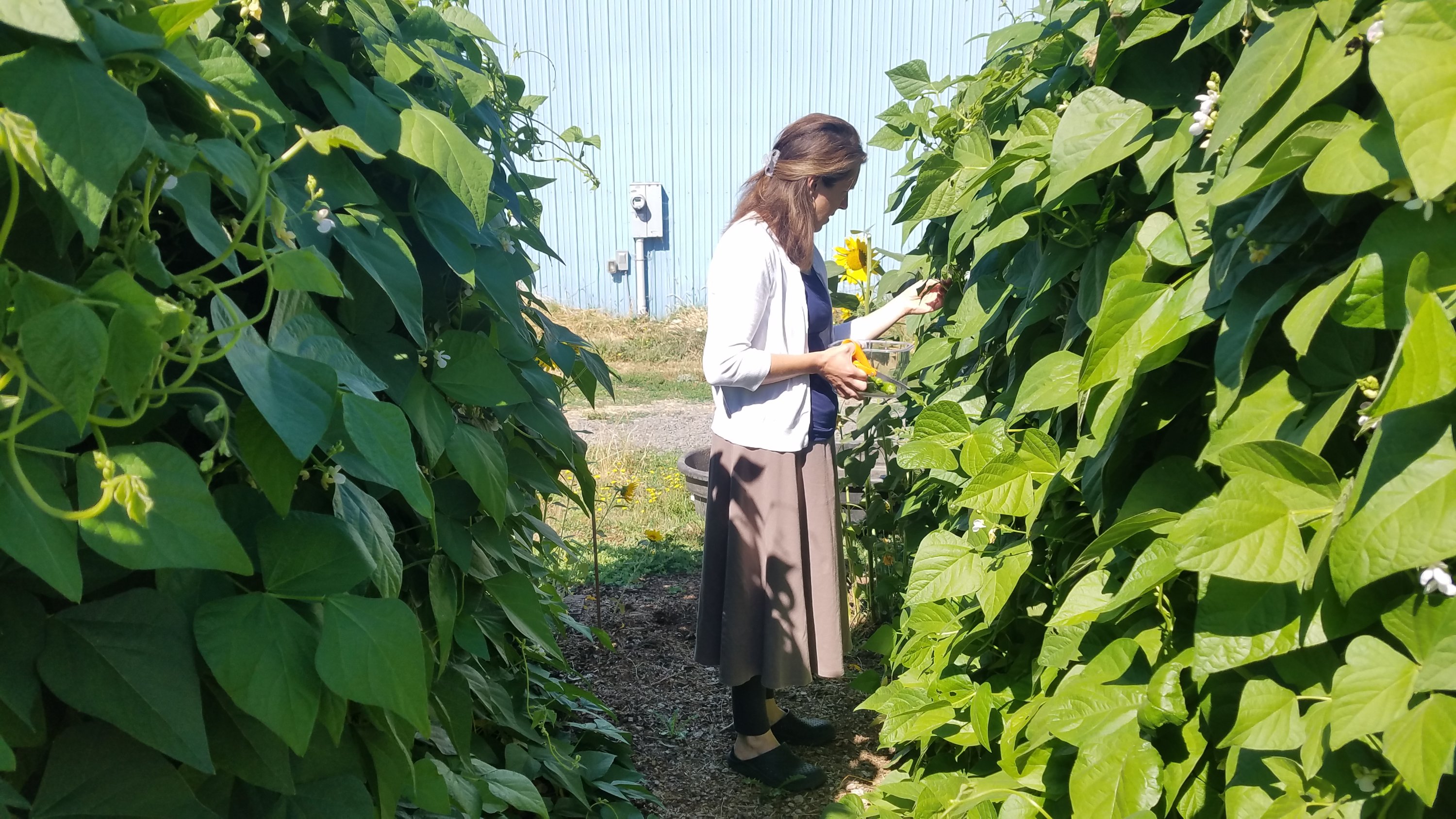
Contender and Gold Rush.
These are the names of two bush bean varieties that I picked up today at Buchanan Cellers. I’m happy with Blue Lake #274 bush beans, but seeds are cheap and that’s reason enough to buy a couple new varieties to test in the garden.
While planting, I discovered that bush beans can be planted 4 inches apart. I had previously planted last week’s beans about 8-9 inches apart! I fixed that zoning error and filled in the gaps with Contender. The middle of the row (that used to have the garlic) got planted with Gold Rush, a bright yellow bean. Grant helped me mark everything. Super champ!
I don’t know if I’ve mentioned this, but I’ve been getting creative with soil amendments. Thank goodness the soil amendments don’t contribute to the flavors in the produce. But hopefully they contribute to the strength of the plant, the nutritional value of the produce, and the health of the soil.
And before you go to bed, Google “can I use urine on my garden?”
Fer reals.
Our Old Mother Stallard beans were lackluster sprouters. Maybe they’ll perform well and be abundant. I moved some Stallard seedlings on the end to be with their friends. To keep our garden full, Josh recommended that I fill the empty spots with asparagus beans. We’re sprouting them in soil blocks this week!
I pressure-canned a few quarts of plain green beans this summer, but I did it out of duty–not love. Who could honestly and truthfully love a limp, peaked green vegetable soaked and bloated in its own juices? In my defense, we had an abundance of fresh green beans, and I had to preserve them in a way that would honor this generous gift from Mother Earth. “Dearie, it’s what you’re supposed to do when you get a bumper crop of green beans.” So I did.
But behind the universe’s back, I secretly canned a few half pints of pickled green beans (also known in the canning world as “dilly beans”). I canned them hoping that they would fill the hole in my heart left by plain canned green beans.
And they did. My heart is now filled to “half an inch from the top” with crisp-tender haricots, little beads of popping mustard seeds, and a swirling snowglobe of dill and garlic.
For the past two months, the tiny jars of dilly beans waited patiently for me on the pantry shelf. Every time I walked by them I said firmly, “Not today, friend. I’ll wait until a very sad or lonely day, and then we will see what joy is bottled up inside.”
Today wasn’t sad or lonely, but still, a bottle was opened. And it brought the brightness and crispness and pure joy that I was hoping for–the happiness that pickled cucumbers promise every season, but really can’t deliver.
There are only 5 half pint jars of pickled dilly beans left. I will eat them very verrrrrry slowly over the next 10 months.
Or they will all disappear tonight.
I make no promises.
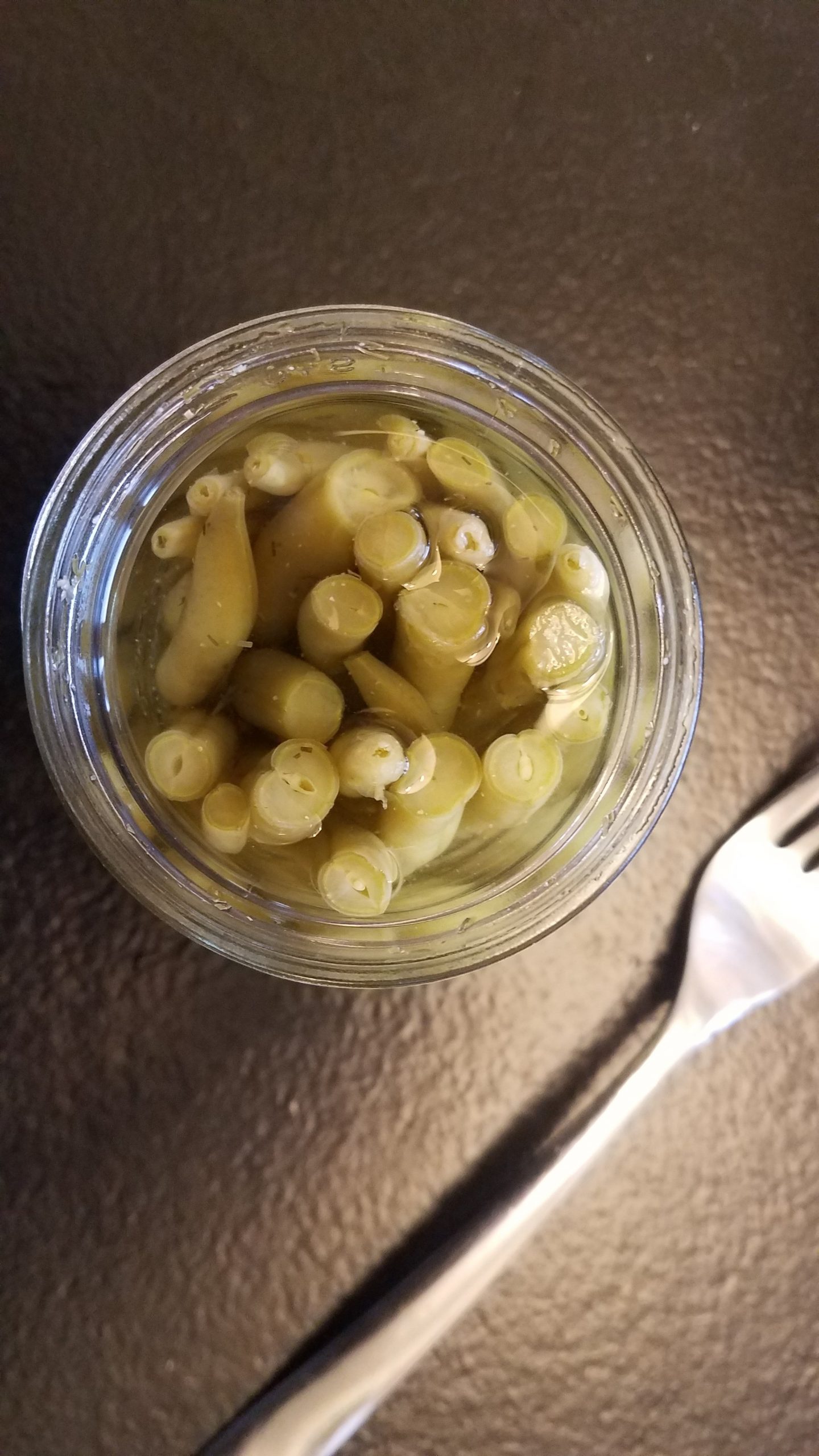
We picked our first ounce of beans today. 😉 The beans that were barely alive are now looking quite healthy and should produce a good crop. The first cucumber and pepper should be ready this week. My peas are almost done for the season. They weren’t nearly as productive as last year but still provided some good table fare. The chard and kale continue to produce like gangbusters.
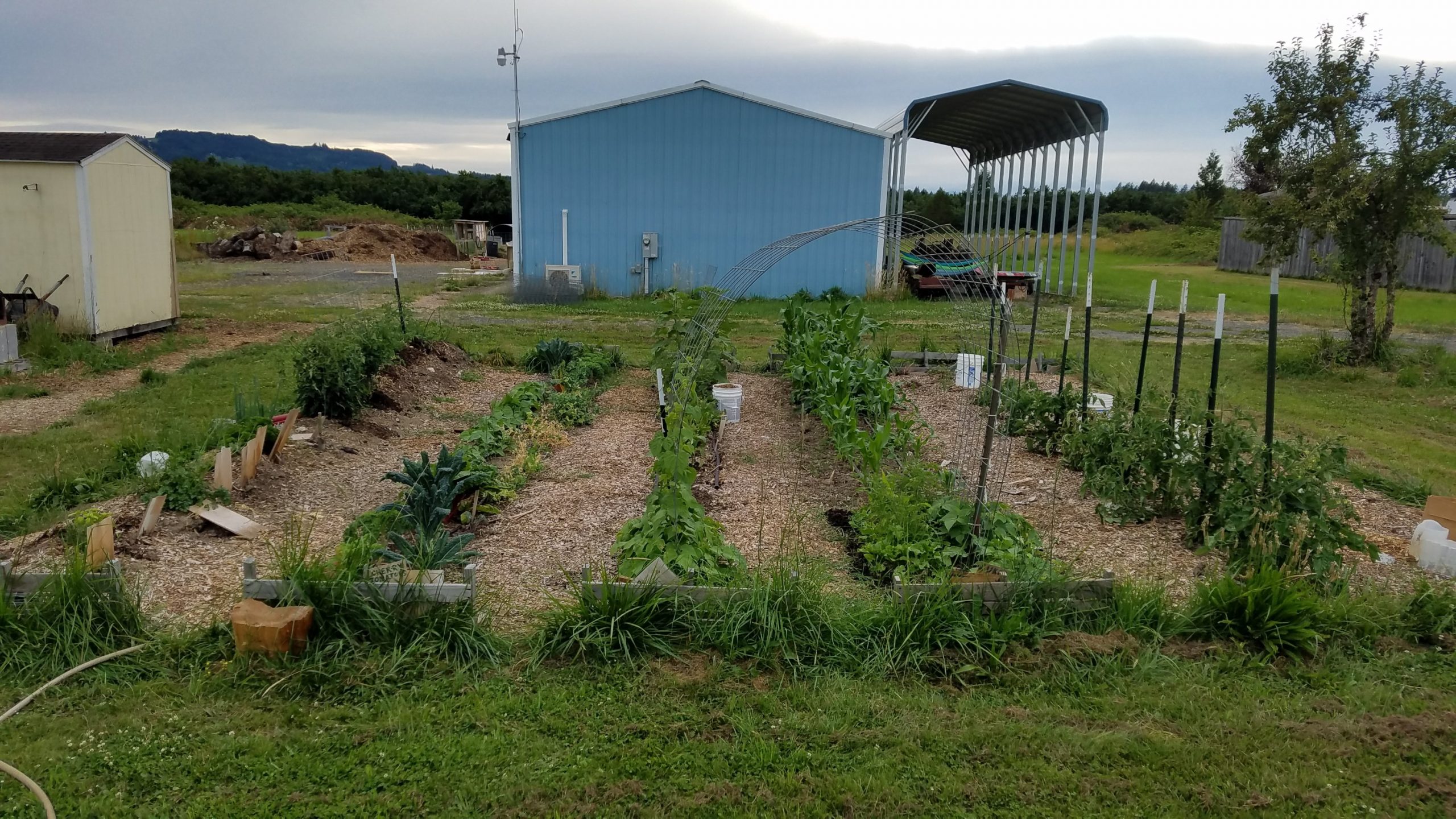
I seeded some carrots and spinach along the center of my row. The peas have been giving us a sparse harvest, and the beans are barely surviving, let alone growing. On the other hand, we’re harvesting plenty of chard and kale.
Our garden continues to languish while we see lots of things growing around us.
We did a red cabbage pH test yesterday, and I think we found a major problem.

From right to left, the first four are the rows of our garden from south to north. All rows are too alkaline, especially #2 and #3. Next is soil from north of the barn, where we plan to plant blueberries, cranberries, and raspberries next year. It’s also too alkaline, especially for blueberries. Next is the only good news in this test: our well water is pH neutral! After that is tap water, which is alkaline. Then distilled water, our pH neutral control.
We also bought an electronic soil pH tester yesterday. I can’t get any reliable results out of it.
We immediately went to the at store, bought 50 pounds of granular elemental sulfur, and spread about 10 pounds on the garden rows (including a little on rows 5 and 6). We’ll spread the rest in the future berry patch area later this summer.
Fortuitously, it rained last night and absolutely poured today, so that will help get the sulfur into the soil… but it will still take months for bacteria to concert it to sulfuric acid and lower the pH of the soil. In the meantime, Heather is experimenting with a watered down vinegar solution to see if it helps in the short term.
My replanting of beans is sprouting.
